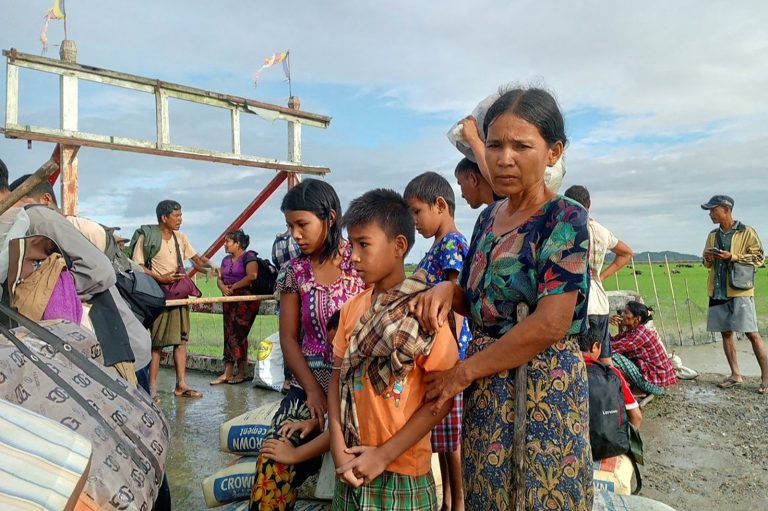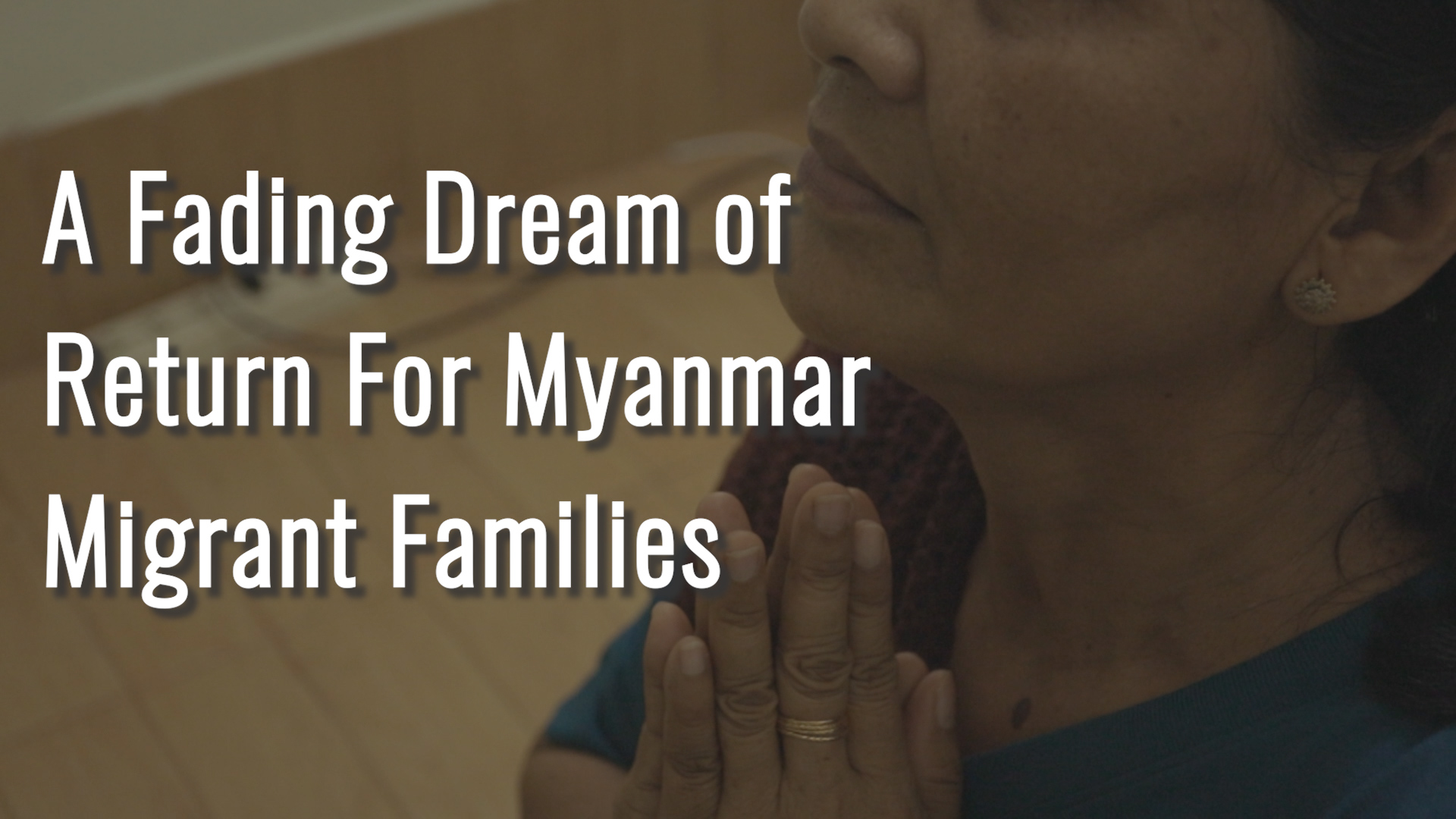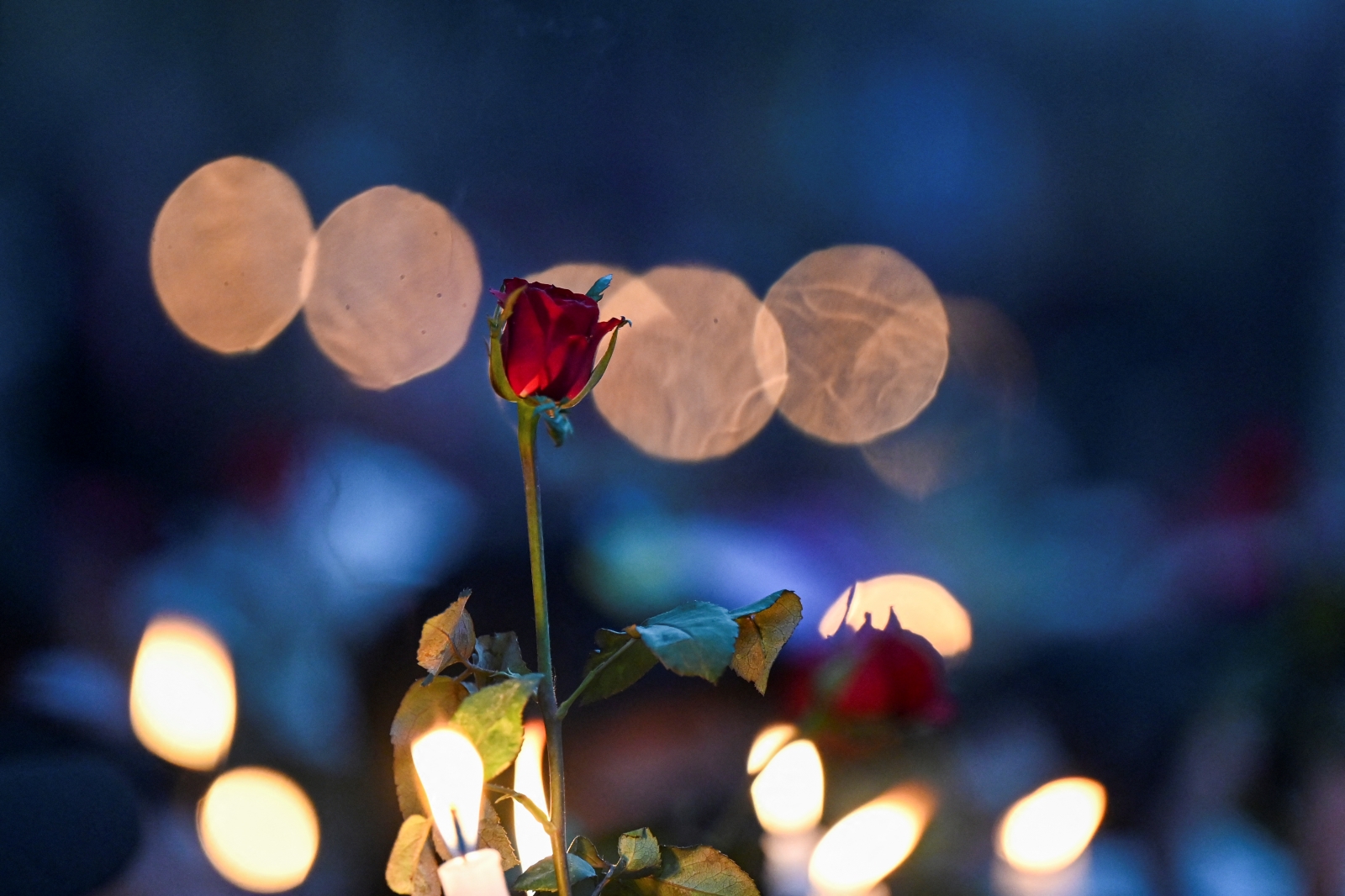Karenni refugees who fled conflict decades ago are channelling aid to newly displaced families in Kayah State – although unlike these families, they have few hopes of ever going home.
By LORCAN LOVETT | FRONTIER
Daw Noe Khu was barely a village when the Kayah countryside plunged into bloodshed. Some cattle grazed around its small cluster of huts near of a banyan tree guarded by a spirit, as the folklore goes, and a shallow cave haunted by a giant python.
Then came the displaced: mothers, children, the elderly and disabled. Their only escape from the Myanmar military was a gruelling trek from west of the Thanlwin River to the fringe of Kayah State, near the border with Thailand but still within reach of the junta’s weaponry.
It was May last year, and as the stragglers turned into streams of weary families, the Thai authorities pushed back many who sought shelter across the border. This denied the displaced families access to a long-established refugee camp of more than 10,000 people, who like them are mostly Karenni, the majority ethnic group in Kayah.
The displaced returned to Daw Noe Khu in desperate need of support, and in those frantic first days it was the refugees across the border in Thailand’s Mae Hong Son province who provided it.
“If there are problems in Daw Noe Khu, the Karenni refugees still fundraise and donate to them. Sometimes they even share their food,” said Maw Myar*, a humanitarian worker who was raised in the refugee camp. “They feel like they are one big family and take care of each other.”
In a show of ethnic solidarity, the Karenni refugees have clawed together gifts of clothes, vegetables and utensils that they carry on foot using a jungle trail to the families on the Myanmar side.
Their support has helped just a fraction of the 83,500 people in Kayah, and more than one million across Myanmar, that have been displaced by conflict since the military ousted the elected government on February 1 last year. But for the displaced of Daw Noe Khu, the donations have shown they are not alone.
“The Karenni refugees were once IDPs [internally displaced people],” said Maw Myar. “They know the situation and totally understand what’s going on.”
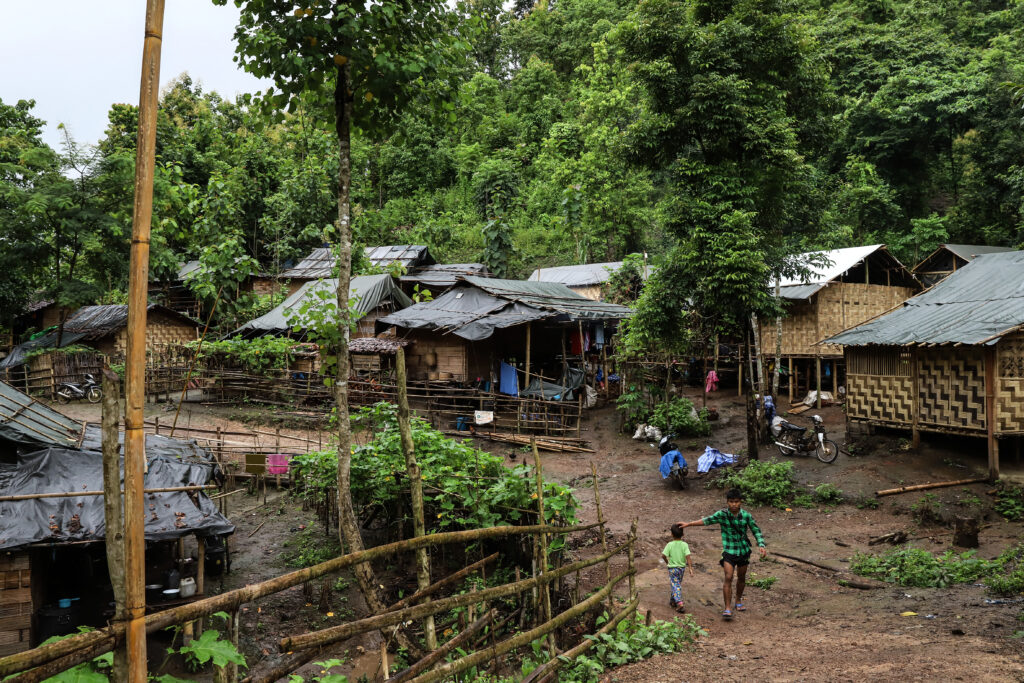
Some of the refugees have lived in the Thailand-based camp since its formation in the aftermath of the last major uprising against the junta in 1988, though others arrived during the following decades. Among them was Klu Reh, 24, who fled his home in Kayah’s Loikaw Township in 2009 after the military accused his father of associating with Karenni rebels.
Together with three other refugees in their 20s, Klu Reh teaches the roughly 150 students at a makeshift college in the IDP camp at Daw Noe Khu. Although this cross-border work brings him closer to the military he escaped as a child, he considers it a duty he owes to his fellow Karenni. “Being there means I can help in some way,” he said.
“We should help our people,” he said. “Not only Karenni in the refugee camp, but also Karenni around the world can help in many ways, or at least give encouragement, because that means a lot to the IDPs.”
At the tail end of wet season, Frontier visited Daw Noe Khu. The college, a high school and a basic clinic serving about 2,400 people had been built there to serve the influx of displaced people. Bamboo huts blend into sloping hills, over which the military sends surveillance drones and fighter jets when conflict intensifies between them and the Karenni resistance.
Buddhists, Christians, and animists have their own places of worship. They drink and bathe using rainwater, and pickle bamboo shoots and forage for wild greens to supplement a diet of rationed rice. Hunting trips for bear and deer are rare because of the threat of landmines and marauding soldiers.
Klu Reh gathers students on a yard for morning assemblies, mixing words of hope with more earthly advice, like the importance of a daily routine. In him the teenagers find someone who shares their wounds, but his presence also speaks to the cyclical nature of Myanmar’s tragedies, which, most in the resistance agree, have one source: the military.
“Some of those who came to Daw Noe Khu are my friends who I knew before,” said Klu Reh. “Other friends died because of the military. It makes me so sad.”
Karenni solidarity can be seen not only between IDPs and refugees, say ethnic leaders, but also in the armed struggle. In Kayah and neighbouring areas, anti-coup groups are either serving under the umbrella of the Karenni Nationalities Defence Force or fighting alongside it.
This unity is rare in a revolutionary movement constrained by division. Myanmar’s myriad ethnic armed groups, who have fought for autonomy for decades, have taken very different approaches to the junta. Resistance armies formed since the coup, meanwhile, have sometimes fought each other and remain fragmented.
Solidarity, however, has its limits for the hard-pressed refugees in Thailand. After travelling from Kayah’s Demoso Township in 2010, Bu Reh, 26, said he arrived there “helpless and alone”. Like other refugees, he is still officially banned from leaving the camp, which is one of nine formal refugee settlements along the Thai-Myanmar border.
Despite some international support, money and resources are tight. “Some young people sneak out illegally to work for a week or two weeks and come back to support their families,” he said, referring to casual jobs in agriculture. Within the camp, he said “people sell small things like snacks or make traditional clothes” but most of what they earn is exhausted on education for their children and household essentials.
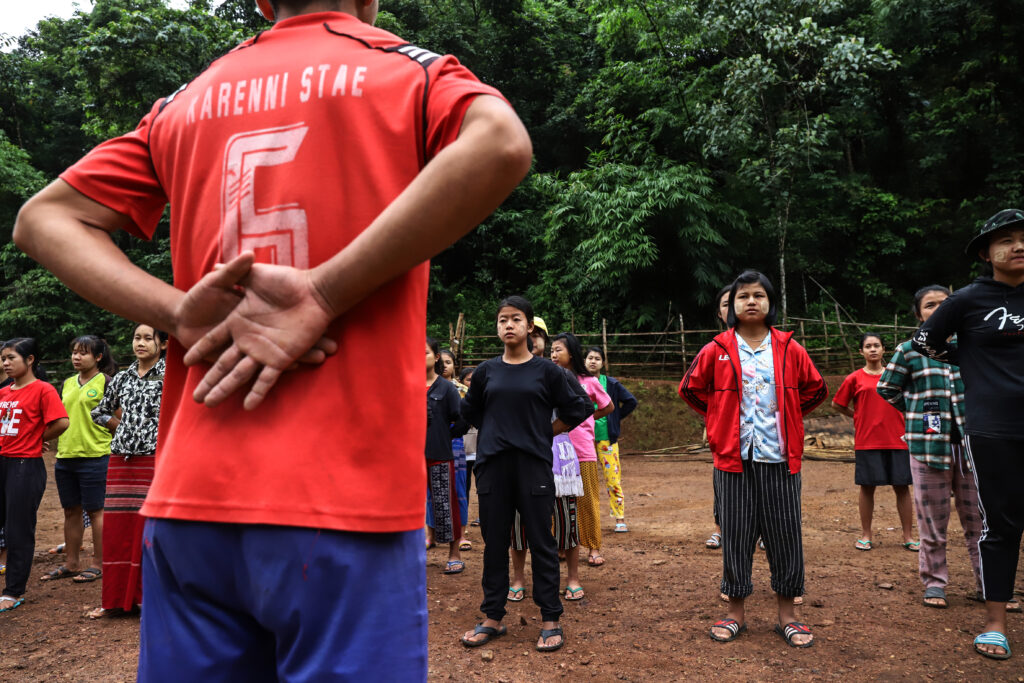
Yet, despite the restrictions, the refugees have more opportunity to improve their lot than those across the border. “The new people [IDPs] don’t know how to get donations and connect to NGOs. It’s very difficult for them, so the refugees have helped manage to get them food and find funds,” Bu Reh said, referring to online donations, particularly from the Karenni diaspora overseas, as well as more formal humanitarian aid.
Back at the IDP camp, Klu Reh described a marked difference in outlook between the newly displaced there and the long-time refugees in Thailand.
“Some people here still hope they can return home, especially the older people,” he said. “People still talk about their houses or family members who have passed away.
“But the refugees don’t think like this because their home is no longer there; they don’t have anything to go back to. They have been living in the camp for years, decades, and they have gotten used to the situation.”
Embodying that determination to return was Neh Ru, a new arrival to Daw Noe Khu. Sitting in her new hut, balanced on a slippery bank, the mother-of-six said her eldest son and daughter were fighting the junta.
This had made Neh Ru and her four younger children a target for the military, which regularly arrests the family members of resistance fighters. The danger this posed, along with the daily rattle of gunfire, forced them to flee their hometown.
Nonetheless, she said she was proud that her eldest children had joined the resistance “to help the people”.
Below her hut, residents distributed rations, carved roads from the mud and built a large house for a Karenni administrator. Some had already accepted they were there for the long run, but not Neh Ru.
“There will be a day in the future for them to enjoy their freedom,” she said of her revolutionary children. “We will win. We have to, so we can go back home.”
*Names have been changed to protect identities



